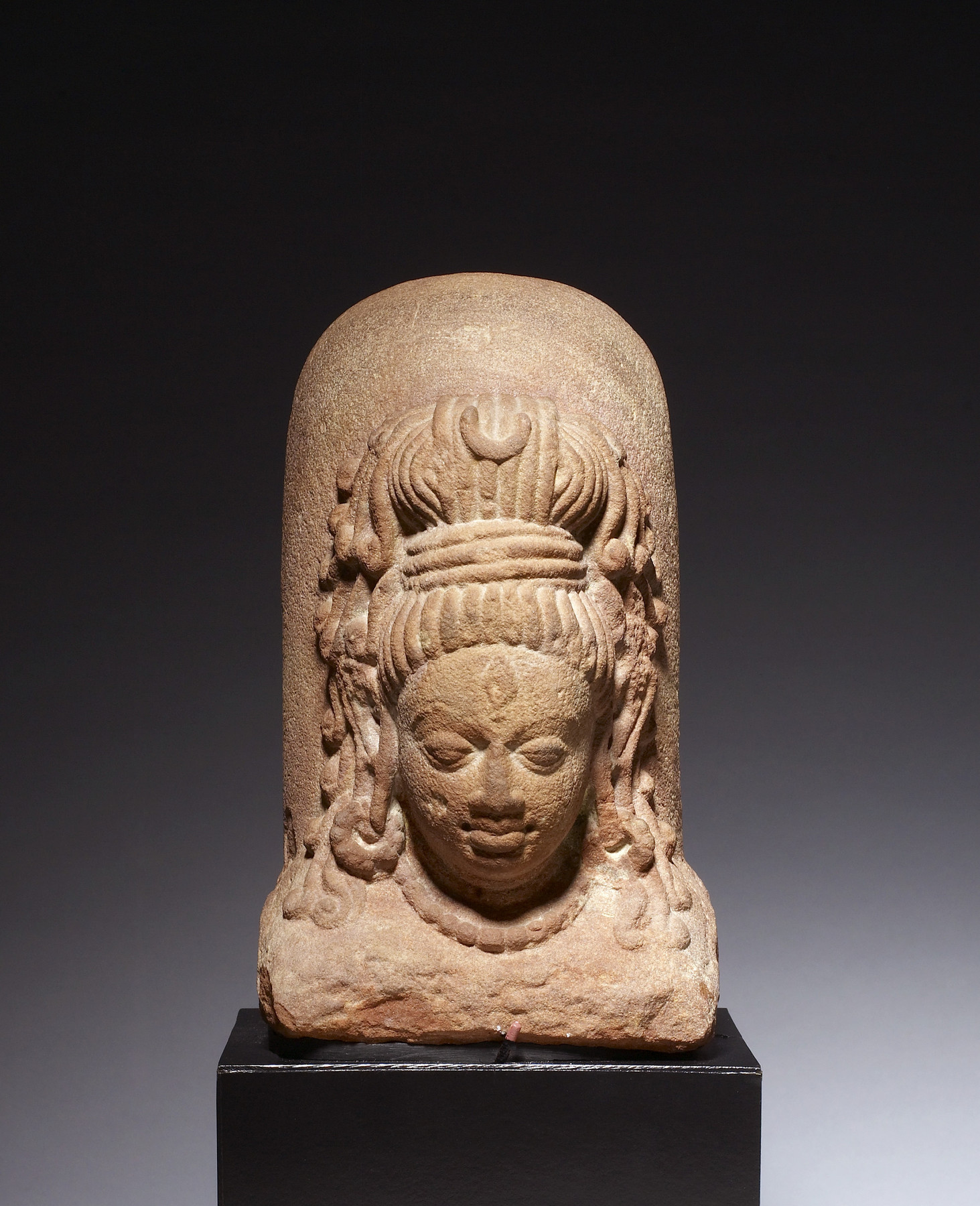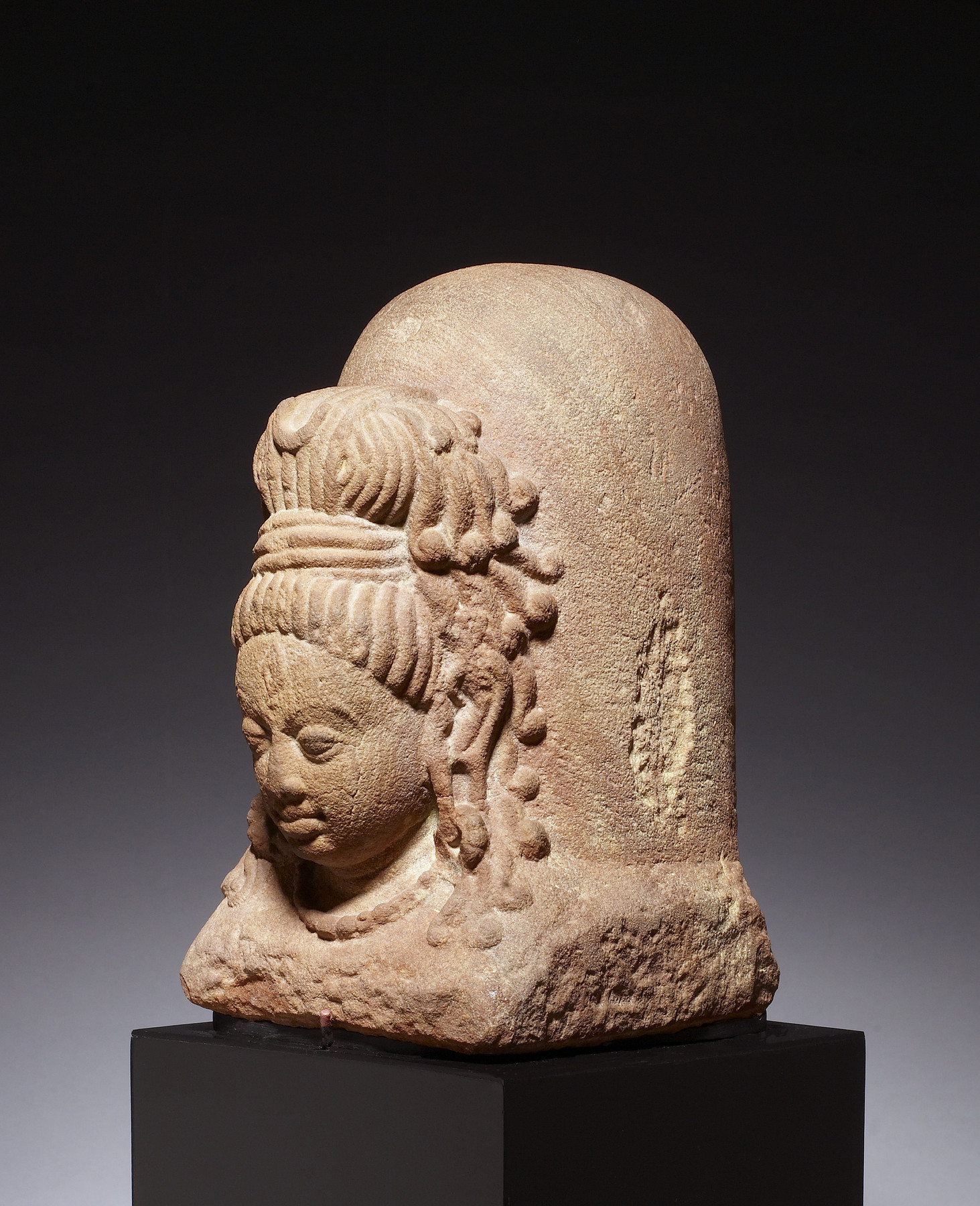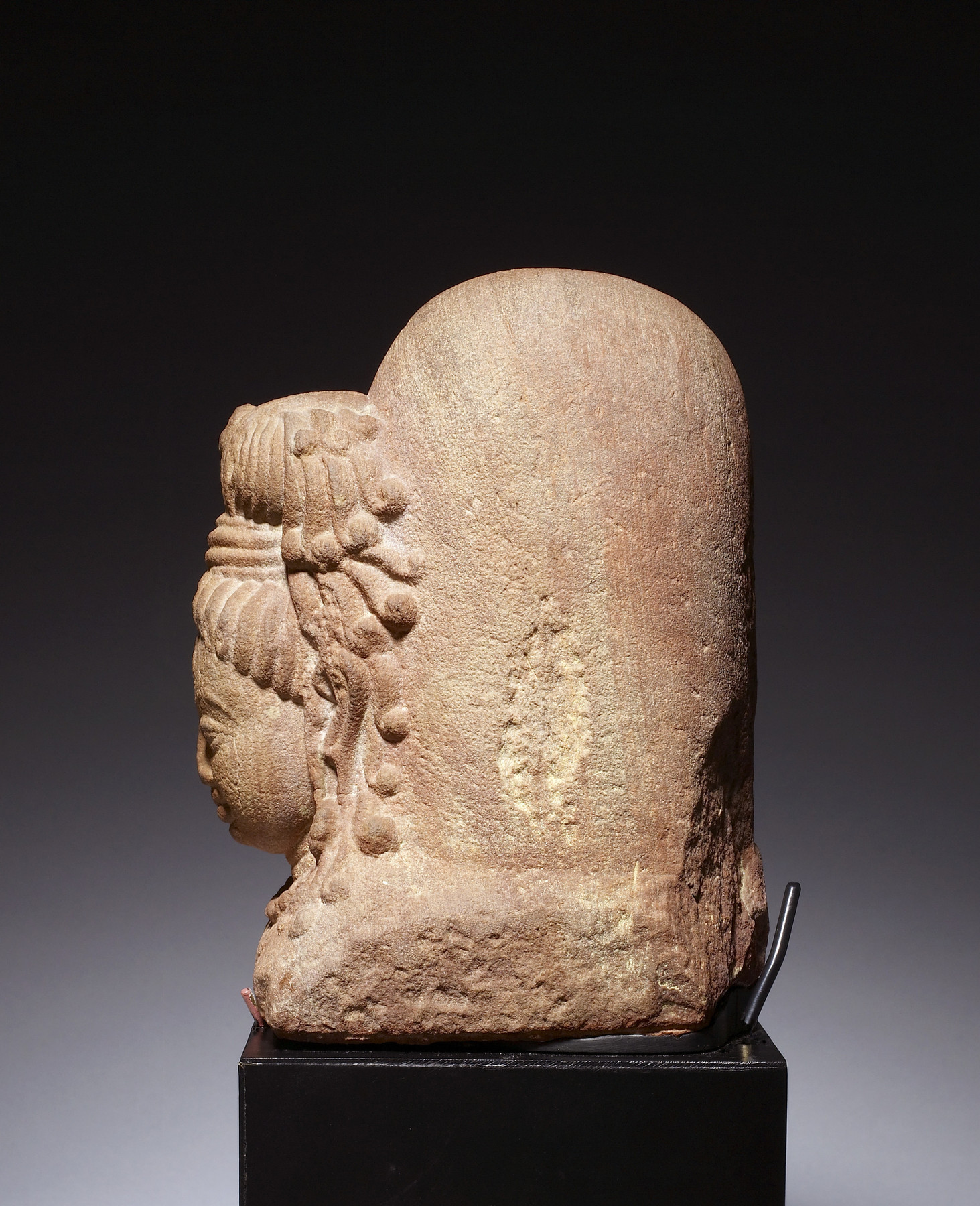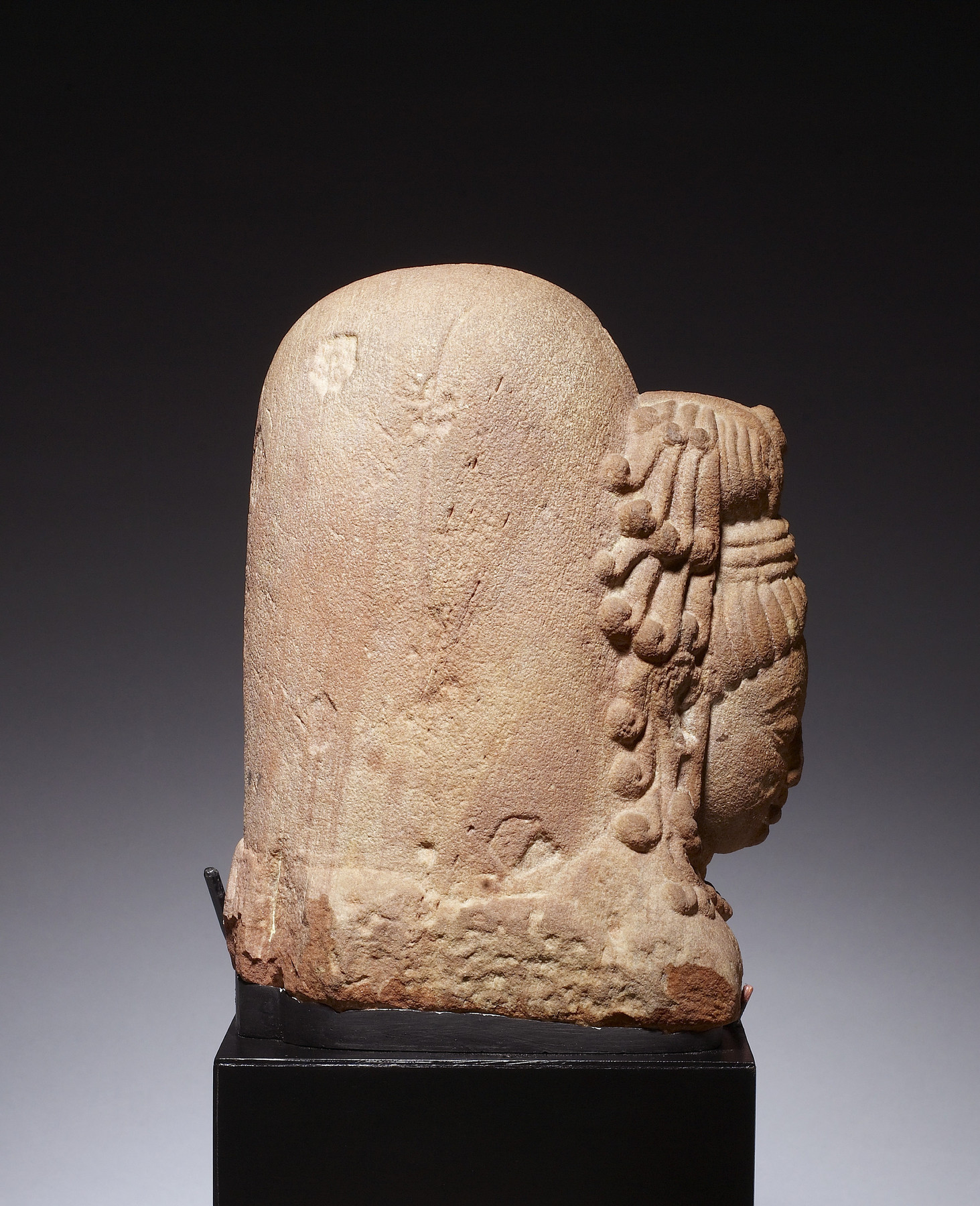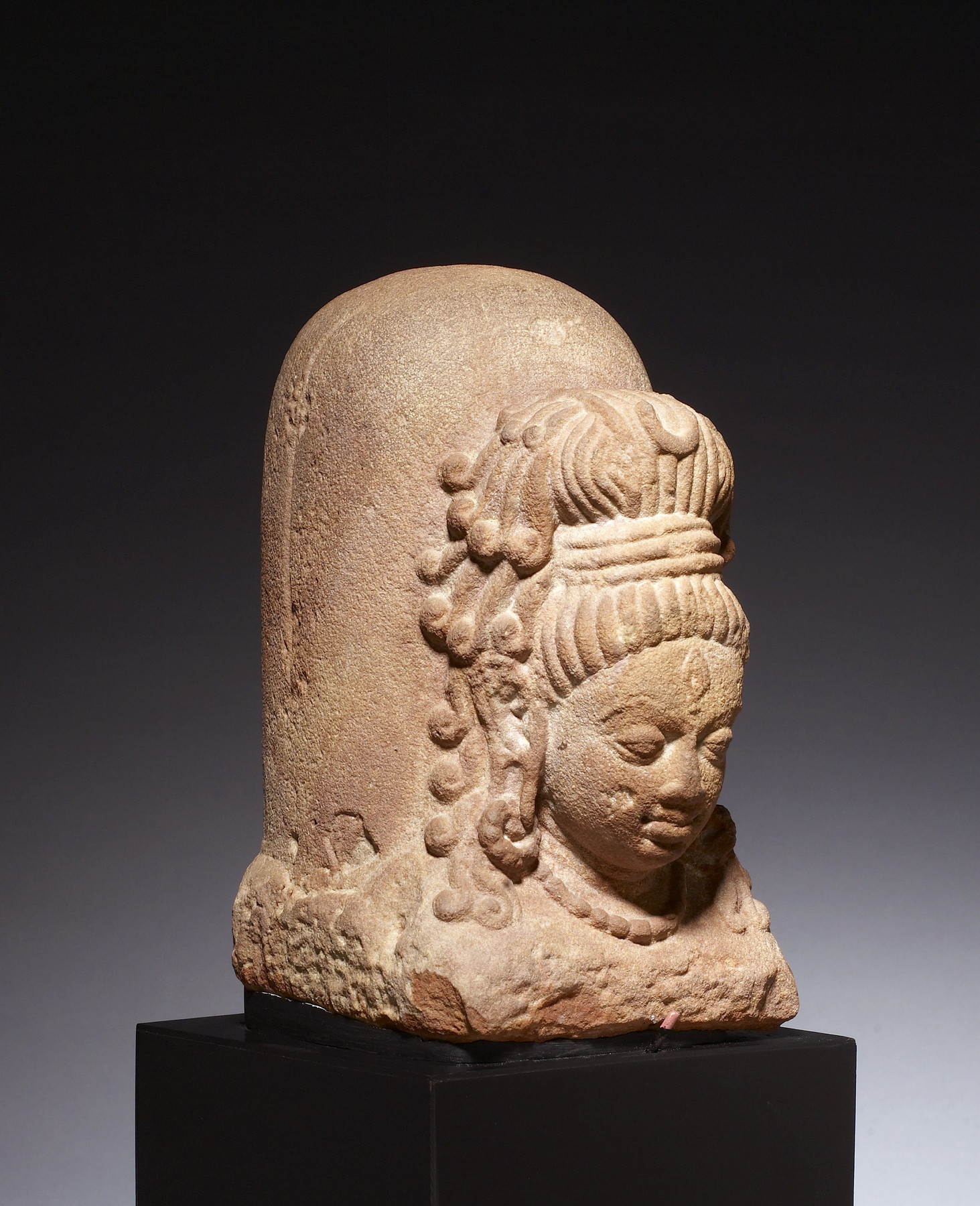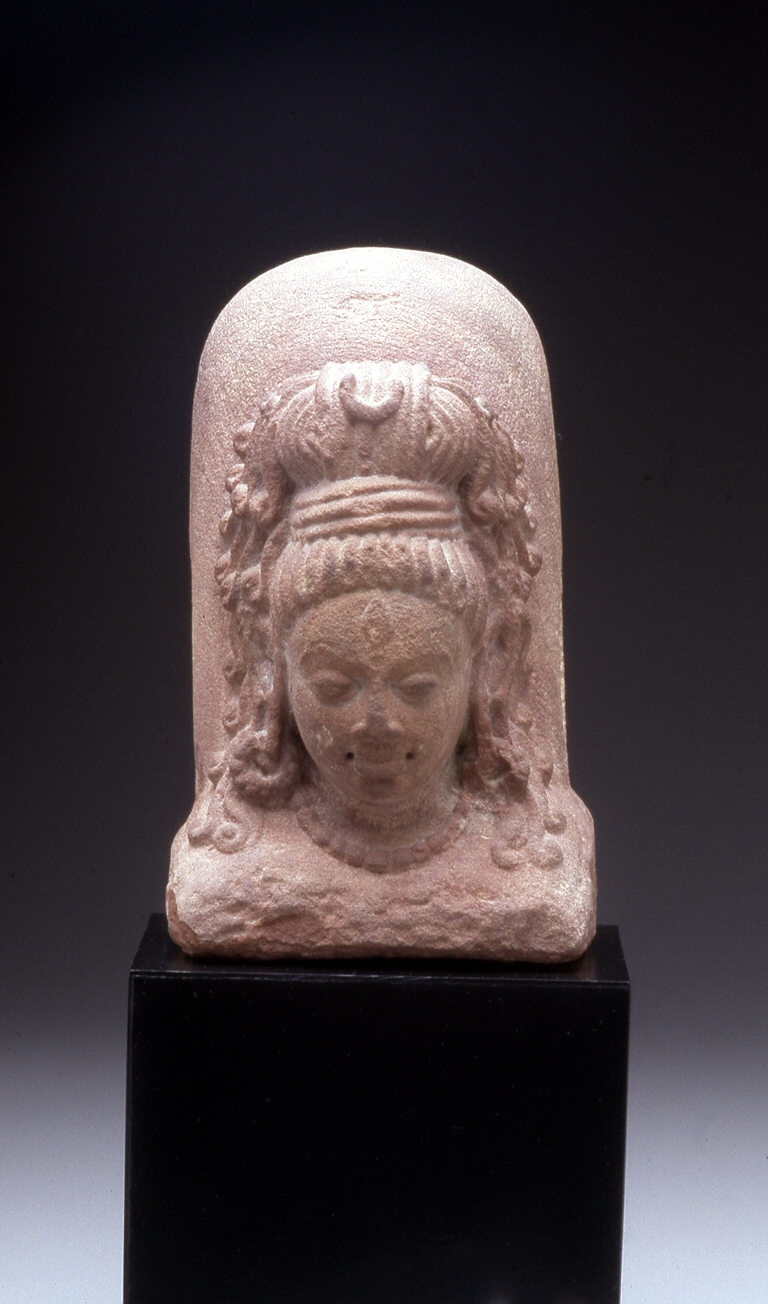Linga with One Face ("Ekamukhalinga")
(India, Nepal, and Tibet)
The face of the Hindu god Shiva emerges from this "linga," the “sign” or emblem through which he is most commonly worshiped. Most lingas are non-figural in form, their abstracted phallic shape alluding to Shiva’s transcendent power and generative energy. Here, Shiva is also represented in anthropomorphic form, manifesting himself to devotees. The crescent moon that adorns his elaborately arranged dreadlocks may be interpreted as a symbol of time, which is marked by the moon’s waxing and waning. Shiva’s third eye, placed vertically in his forehead, is both a symbol of his all-seeing wisdom and the source of the fire of destruction, through which he annihilates then regenerates the cosmos.
Provenance
Provenance (from the French provenir, 'to come from/forth') is the chronology of the ownership, custody, or location of a historical object. Learn more about provenance at the Walters.
Subhash Kapoor, Temple Art, New York City; purchased by John and Berthe Ford, Baltimore, 1983; given to Walters Art Museum, 2003.
Exhibitions
| 2001-2003 | Desire and Devotion: Art from India, Nepal, and Tibet in the John and Berthe Ford Collection. The Walters Art Museum, Baltimore; Santa Barbara Museum of Art, Santa Barbara; Albuquerque Museum, Albuquerque; Birmingham Museum of Art, Birmingham; Hong Kong Museum of Art, Hong Kong. |
Geographies
India, Uttar Pradesh
(Place of Origin)
India, Madhya Pradesh (Place of Origin)
Measurements
H: 7 1/4 × W: 4 1/4 × D: 5 9/16 in. (18.4 × 10.8 × 14.2 cm); Block H: 5 3/8 × W: 4 15/16 × D: 4 15/16 in. (13.6 × 12.5 × 12.5 cm)
Credit Line
Gift of John and Berthe Ford, 2003
Accession Number
In libraries, galleries, museums, and archives, an accession number is a unique identifier assigned to each object in the collection.
In libraries, galleries, museums, and archives, an accession number is a unique identifier assigned to each object in the collection.
25.250

